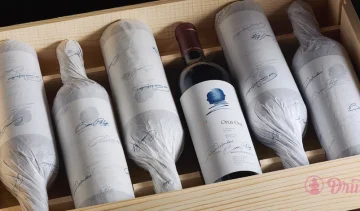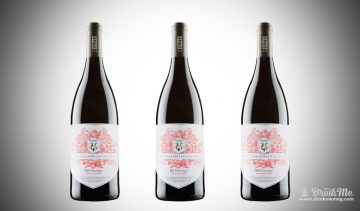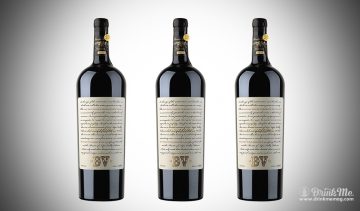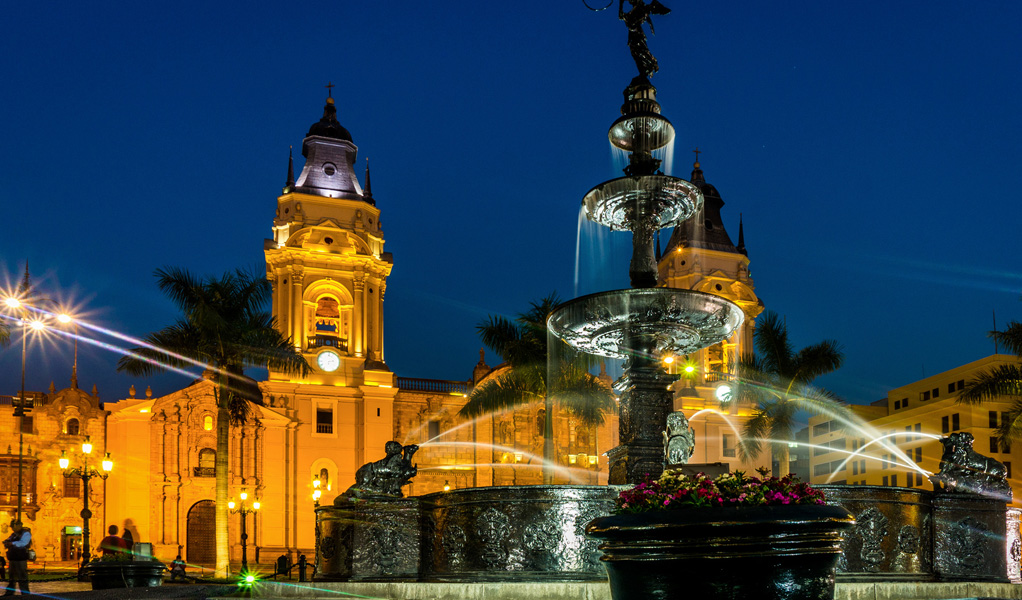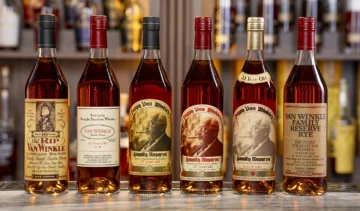On a Saturday night, my first in Lima, I find myself in the grand foyer of the stunning Berninzon Mansion flanked by two voluptuous staircases. Built at the end of the 19th century, in the city’s bohemian Barranco neighborhood, the ostentatious abode is now the Ayahuasca Bar.
There are a multitude of rooms and each is packed like miniature throbbing nightclubs. Each chamber is uniquely decorated—vibrant striped furniture in one, recycled metal adorns the wall in another. What unites the space is its modernized nod to Peru’s past and its reverence toward the country’s ancient mystical remedies.
The drinks on the big menu are bold and playful, macerated in exotic herbs and fruits like camu camu, the Amazonian berry. In this wildly theatrical bar I opt for the aptly named Shaman, a stirred Pisco drink with cinnamon and red and green apples.
Pisco, a clear grape brandy, is Peru’s national spirit, and one could not—and would not— want to leave the country without sampling it in myriad libations. Throughout my vacation I will come to learn that a vast Pisco world exists beyond the sours and punches that have dominated my palate thus far.
The next day I am at a brightly lit bar: there are colorful masks above the tables and a mural on the wall, and it is not a drink I first covet but a scarf, a soft, slate blue one spun from alpaca wool that matches my eyes. A table inside the upbeat La Emolienteria, in Lima’s park-strewn Miraflores neighborhood, is swarmed by a gaggle of young ladies poring over these creations handmade by women from the city’s surrounding countryside. After feasting my eyes I find warmth at the bar where hot, fragrant concoctions known as emolientes are the specialty.
Made with a mélange of herbs and grains – barley, alfalfa sprout, flax seed, and dried horsetail are particularly popular ingredients – these elixirs, which are served on many a Lima street corner, have purportedly curative powers and have been used as such since Peru’s colonial era. Although the teetotaler’s version undoubtedly does the body better, I am in a bar, so mine is enhanced with Pisco. It soothes as it glides down: a proper, restorative hot toddy.
Later that evening my thoughts turn toward tradition and the Pisco Sour—simple syrup, lime juice, egg white, bitters. I don’t recall where I was when I tasted my first. I only know that it was love at first sip: the ethereal egg white crown, the bracing acidity. This is what I relive on the terrace of the classic Gran Hotel Bolivar, overlooking the city’s historic center, while a group of diplomats clink glasses in the corner. A tray of oversized Pisco Sours, for which the hotel is famous, arrives at the table served in Daiquiri glasses. I take one and am reminded how besotted I am with the drink, its aromatic subtlety revealed through a few dashes of Peruvian bitters extracted from bark, roots, and flowers.
To miss out on the robust gastronomic culture of Lima is to miss out on the city. So, saddled with my love of Japanese food, the next evening I venture to Maido, a tony restaurant on a sultry corner of Miraflores. The neighborhood feels like Miami; the restaurant sits nestled between dreamy white homes. This is where Nikkei, the symbiosis between Peruvian and Japanese cuisine, is deftly captured. Climbing the staircase to a dimly lit lounge area, I am excited to experience the creations of chef Mitsuharu Tsumura, and ease my way in with a coca sour. This sophisticated cocktail, served in the rocks glass, differs from the traditional rendition with its coca leaf-infused Pisco. You may have these very same healing leaves when you take the short flight to the nearby altitude-warping Cusco where they use the leaves to make a timeless tea that tames mountain sickness. Its hue is dark, its taste robust and vegetal, each sip is an homage to Andean culture.
After dinner, the crispy pork belly leaves me hankering for a soothing nightcap. This time I take a short cab ride over to the simply named PISCOBAR, which feels like a well-worn and welcoming social club. It’s helmed by affable barkeep Ricardo Carpio whose passion for Pisco is obvious from every artfully balanced cocktail he pours. As he regales me with stories of the spirit, he makes Capitáns, essentially a boozy Manhattan with Pisco, and refreshing Chilcanos, in which Pisco mingles beautifully with lime and ginger ale.
All to soon my trip is over and Lima fades to memory. That is until I pull my Pisco out of the cupboard and with one sip of my homemade Chilcano, my kitchen fades away. The drink glides down easily and for a moment I hear the round hum of a pan flute.
Ayahuasca Restobar Lounge
Avenida Prolongacion San Martin 130
Barranco
Lima, Peru
98 104 4745
Hours:
Monday – Saturday, 8 P.M. – 3 A.M.
Gran Hotel Bolivar
Jirón de la Unión 958
Cercado de Lima
Lima, Peru
51 1 6197171
Open daily
La Emolienteria
Avenida Oscar Benavides 598
Miraflores
Lima, Peru
51 1 4463431
Hours:
Monday – Thursday Noon – 1 A.M.
Friday – Saturday Noon – 3 A.M.
Sunday Noon – 1 A.M.
Maido
Calle San Martin 399
Miraflores
Lima, Peru
51 1 446-2512
Hours:
Monday – Sunday 12:30 – 4 P.M.
Monday – Saturday 7:30 p.m. – 11 p.m.
PISCOBAR
Avenida Petit Thouars 5390
Miraflores
Lima, Peru
Hours:
Tuesday – Sunday Noon – 4 P.M.
Tuesday – Saturday 6:30 P.M. – 1 A.M.


